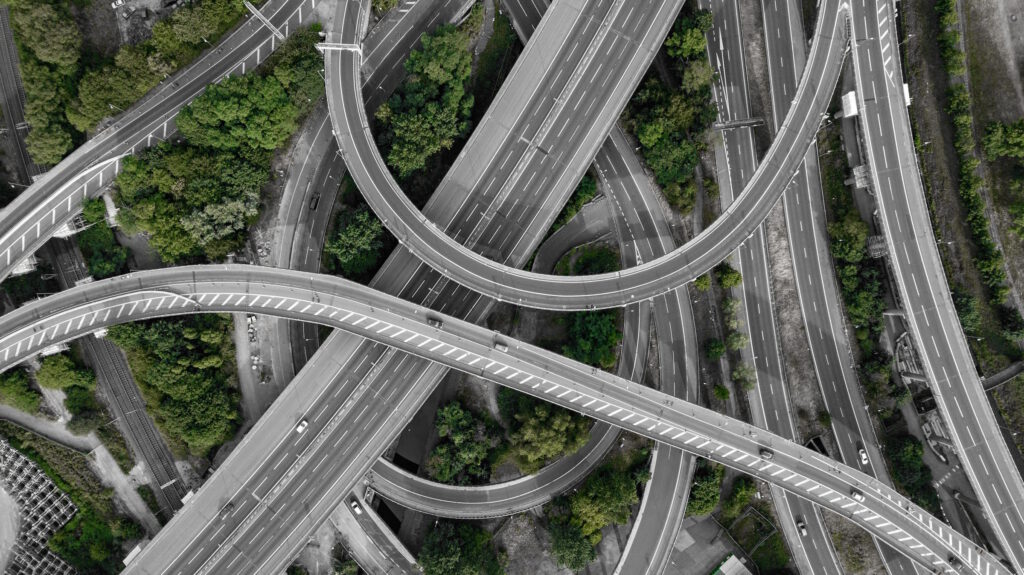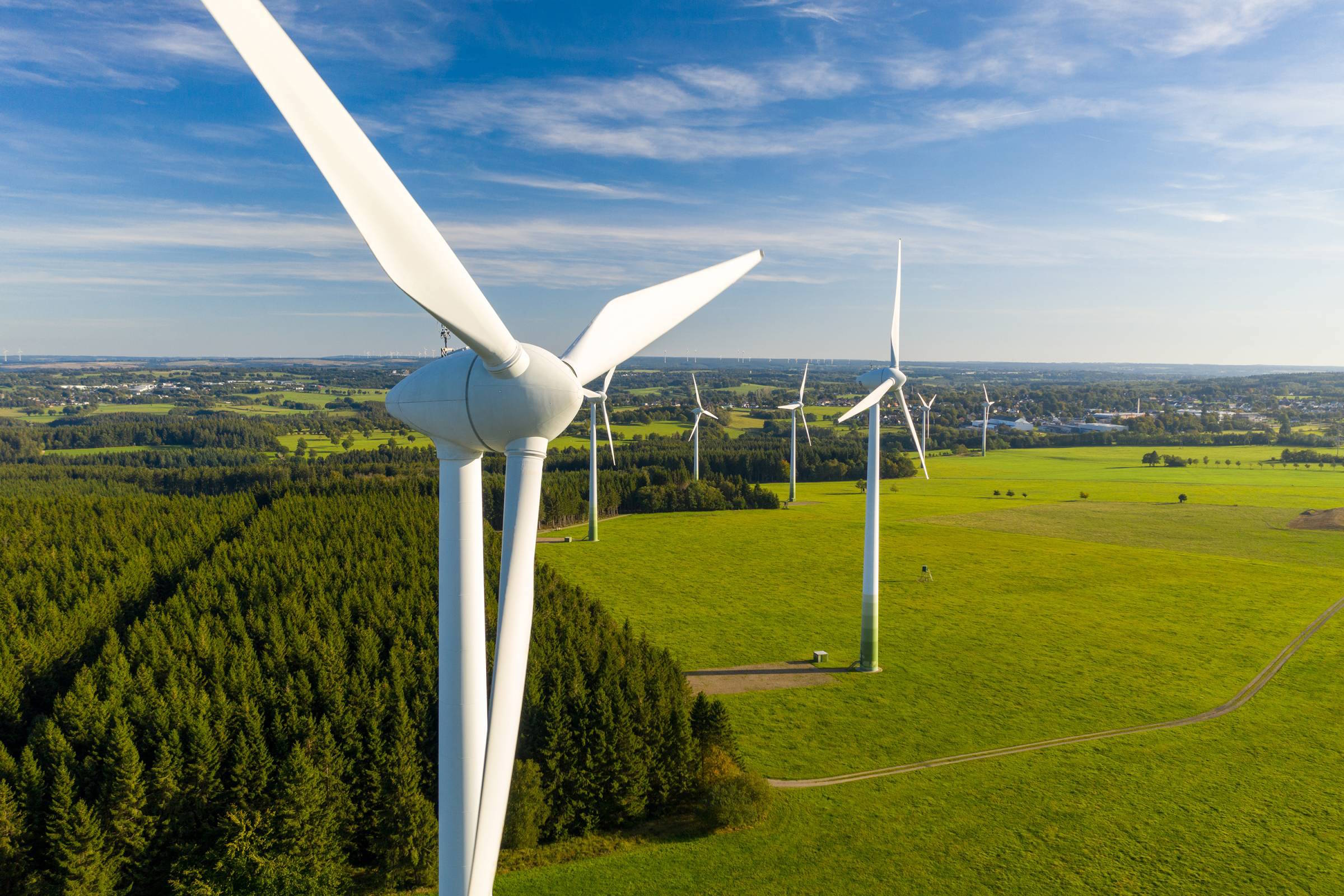When Congress passed the Bipartisan Infrastructure Deal, they also ushered in something new — a major commitment to a clean energy future.
For the past decade, we’ve experienced quite a few unsettling things, including crumbling roads and bridges, highways that badly need expansion to alleviate city traffic, and the terrible ways in which climate change events have twisted and destroyed our infrastructure. Through this time, very little has been done because Congress is locked in partisanship and gridlock.
In November, at long last, lawmakers from both sides of the aisle delivered a long-awaited Infrastructure Bill. The $1.2 trillion bill includes $550 billion in federal investments over the next five years, which will enhance everything from roads and bridges to water and energy systems, broadband expansion, and railway and airport improvements.
But it’s what the bill emphasizes that makes it one of the most significant pieces of legislation signed in decades: the future. And a future powered increasingly by clean and renewable energy, at that.
When President Joe Biden sat down at the White House November 15 to sign the bill into law, he was fresh off his appearance at the COP 26 summit in Glasgow, Scotland. With the country struggling to keep roads safe, and reeling from yet another horrific year of wildfires, hurricanes, floods, drought, and sea level rise, he presented a strong argument that cut through some of the intransigence in Congress — and set the nation on a well-thought-out future course while pinning down one of the key cornerstones of his economic agenda.
“I believe there’s an incredible opportunity, not just for the United States but for all of us,” President Biden said in his November 1 speech to participants at COP 26. “We’re standing at an inflection point in world history.”
“We have the ability to invest in ourselves and build an equitable clean-energy future and in the process create millions of good-paying jobs and opportunities around the world — cleaner air for our children, where bountiful oceans, healthier forests and ecosystems for our planet. We can create an environment that raises the standard of living around the world. And this is a moral imperative, but it’s also an economic imperative — if we fuel greater growth, new jobs, and better opportunities for all our people,” the President added.
With infrastructure damage from calamitous climate and weather events alone now averaging $100 billion a year, and communities everywhere in the country affected, much of the focus of the bill deals with manufacturing and innovation — and solutions that better withstand the increased forces of nature.
However, this bill is historic for its specific focus on clean and renewable energy solutions for our infrastructure and transportation needs of the future. It also gets the ball rolling now on the solutions we need; the sense of urgency Biden has felt for 15 years finally coming to bear on Congress. The President alluded to this urgent need when he told the COP26 gathering, “This is the decade that will determine the answer. This decade. The science is clear: We only have a brief window left before us to raise our ambitions and to raise — to meet the task that’s rapidly narrowing… we have an opportunity to prove ourselves.”
The bill takes the first steps towards the Biden Administration’s stated climate change commitments, laid out at COP 26: Reduce U.S. emissions by 50-52% from 2005 levels in 2030; create a 100% carbon pollution-free power sector by 2035; and achieve a net-zero economy by 2050. Together, they unlock the full potential of a clean energy economy that combats climate change, advances environmental justice, and creates good-paying jobs.
Let’s take a further look at the major sustainability and clean energy-related provisions of the Bipartisan Infrastructure Deal:
Public Transit
The Bipartisan Infrastructure Deal makes the largest investment in passenger rail since the creation of Amtrak fifty years ago– helping reduce greenhouse gas emissions by repairing, upgrading, and modernizing the nation’s transit infrastructure. The deal will invest $66 billion to provide healthy, sustainable transportation options for millions of Americans by modernizing and expanding transit and rail networks across the country. It will replace thousands of transit vehicles, including buses, with clean, zero-emission vehicles. And, it will benefit communities of color who are twice as likely to take public transportation and often lack sufficient public transit options.

Electric Vehicle Infrastructure
The bill calls for $7.5 billion to build out the first-ever national network of EV chargers in the United States. The plan is to accelerate the adoption of EVs to address the climate crisis and support domestic manufacturing jobs. The deal will provide funding for deployment of EV chargers along highway corridors to facilitate long-distance travel and within communities to provide convenient charging where people live, work, and shop – and funding will have a particular focus on rural, disadvantaged, and hard-to-reach communities.
Clean School Buses
The bill will deliver thousands of electric school buses nationwide, including in rural communities, to help school districts across the country buy clean, American-made, zero-emission buses and replace the yellow school bus fleet for America’s children. The deal invests in zero- and low-emission school buses, in addition to more than $5 billion in funding for public transit agencies to adopt low- and no-emissions buses.
Modern Infrastructure
The Bipartisan Infrastructure Deal invests $17 billion in port infrastructure and $25 billion in airports to address repairs and maintenance backlogs, reduce congestion and emissions near ports and airports, and drive electrification and other low-carbon technologies.

Climate Change Resilience
The deal is the largest investment in the resilience of physical and natural systems in American history. The deal makes our communities safer and our infrastructure more resilient to the impacts of climate change and cyber-attacks, with an investment of over $50 billion to protect against droughts, heat, and floods – in addition to a major investment in the weatherization of American homes.
Clean Drinking Water
Access to clean drinking water will now expand to all American families, eliminate the nation’s lead service lines and help to clean up the dangerous chemical PFAS (per- and polyfluoroalkyl). The Deal will invest $55 billion to expand access to clean drinking water for households, businesses, schools, and child care centers all across the country. From rural towns to struggling cities, the deal will invest in water infrastructure and eliminate lead service pipes, including in Tribal Nations and disadvantaged communities that need it most.
Legacy Pollution
The Bipartisan Infrastructure Deal delivers the largest investment in tackling legacy pollution ever, $21 billion, to clean up Superfund and brownfield sites, reclaiming abandoned mines, and capping orphaned oil and gas wells. These projects will remediate environmental harms, address the legacy pollution that harms the public health of communities, create good-paying, union jobs, and advance long overdue environmental justice.
Clean Energy Transmission
The Bipartisan Infrastructure Deal’s more than $65 billion investment is the largest investment in clean energy transmission and the electric grid in American history. It upgrades our power infrastructure, including by building thousands of miles of new, resilient transmission lines to facilitate the expansion of renewable energy. It creates a new Grid Deployment Authority, invests in research and development for advanced transmission and electricity distribution technologies, and promotes smart grid technologies that deliver flexibility and resilience. It also invests in demonstration projects and research hubs for next generation technologies like advanced nuclear reactors, carbon capture, and clean hydrogen.
With the bill now law, the wheels are turning quickly to activate all aspects of the legislation, especially knowing that at any time, another catastrophic storm or event can hit anywhere — as the early December tornado tragedies in Kentucky and six other states made clear. Also, we can now look to the future we’ve really been headed towards, anyway, one where clean and renewable energy, and their vehicles and products, are more than an alternative to our fossil fuel-fed national lifestyle.
Now, thanks to the bill, they are mission-critical — driven by a team hell-bent on making the 2020s the decade America became a bastion of infrastructure again.










